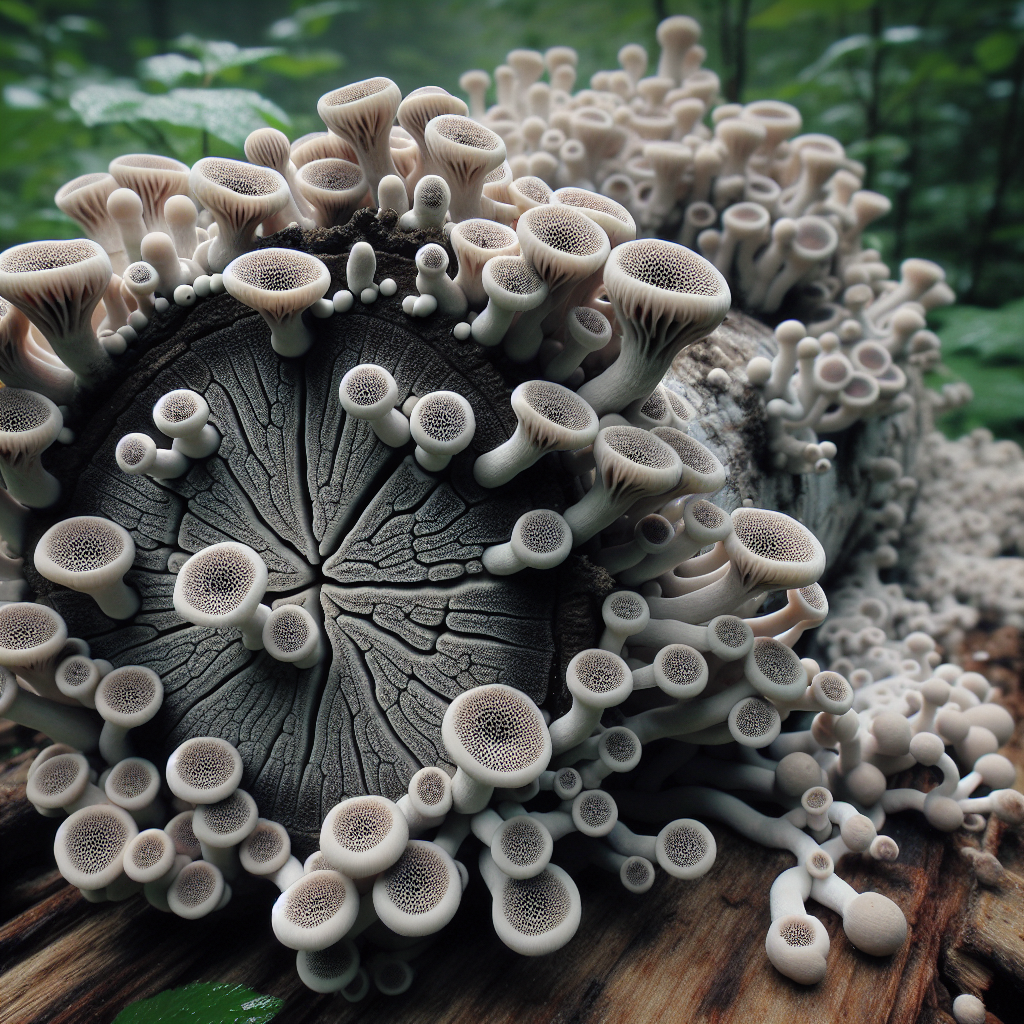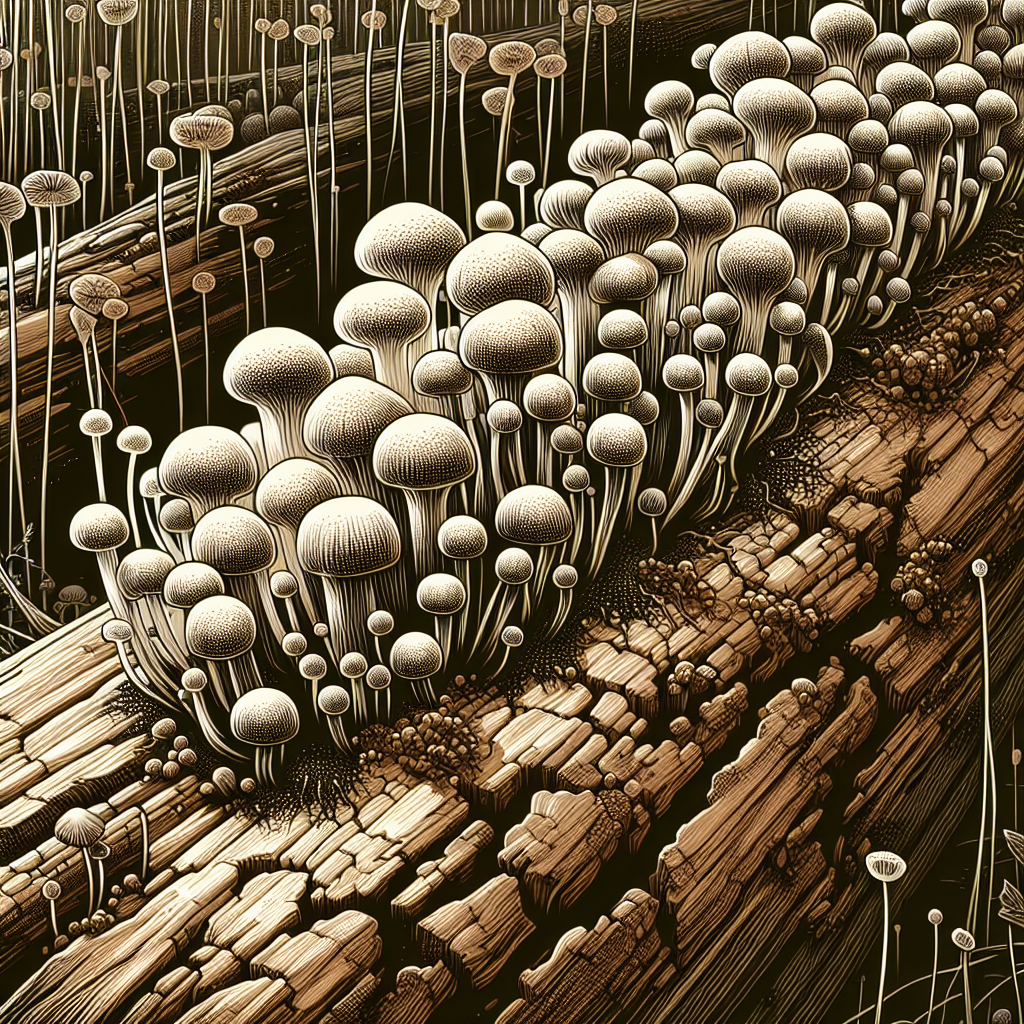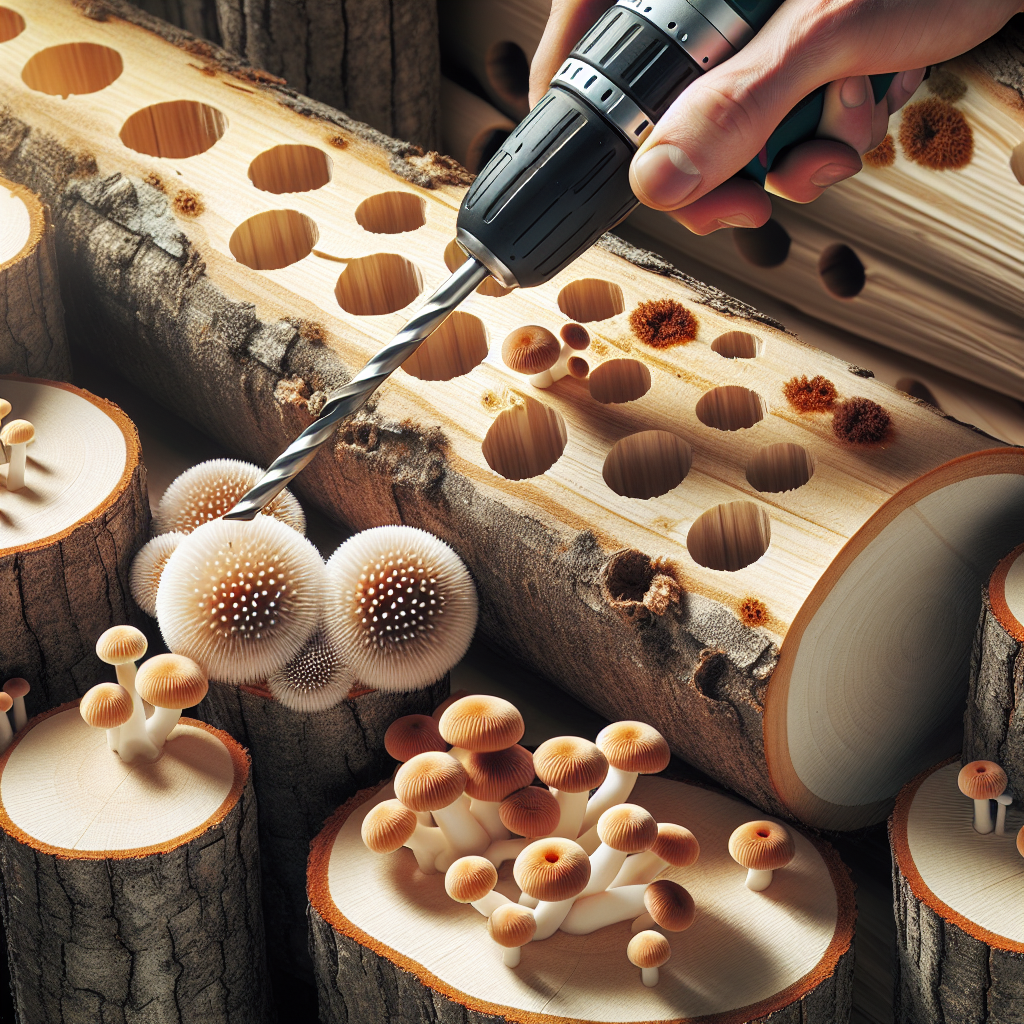In the enriching world of mycology, exploring the effective use of mycelium plugs can dramatically shape your understanding and practices. Engaging with this article will equip you with valuable insights into the specific role these plugs play in successful mushroom cultivation and how they can bolster the health of your plants and soil. As your guide, this piece will navigate you through a comprehensive exploration of their utilization, benefits, and the noteworthy influence of these vital components on the overall ecosystem. Strap in for an exciting journey into the world of mycology that promises to enhance your command on the effective use of mycelium plugs.

Understanding What Mycelium Plugs Are
Mycelium plugs are specialized items used in the cultivation and propagation of various types of edible and medicinal mushrooms. They consist of dowel pegs that have been inoculated with mycelium, the vegetative part of the fungus. These plugs, when inserted into logs and other suitable organic materials under appropriate conditions, facilitate the growth of fungi and eventually yield mature mushrooms.
Defining Mycelium Plug
A mycelium plug, in simple terms, is a cylinder of wood that is filled with mycelium. Historically, wooden dowels have been commonly used as plugs because of their size and compatibility with the traditional drilling methods used to prepare logs for inoculation. The primary purpose of these plugs is to provide a point of entry for fungal mycelium into a substrate suitable for growth.
The Role of Mycelium Plugs in Mushroom Cultivation
Mycelium plugs play an essential role in mushroom cultivation. They offer an easy and efficient way of introducing mushroom spores into a host substrate for mushroom cultivation. Instead of forcing the mycelium to colonize a log or other substrate from a tiny spore, plugs give the mycelium a head start. This advantage often results in faster colonization times and ultimately, quicker mushroom production.
The Composition of Mycelium Plugs
Understanding the composition of mycelium plugs is crucial to maximizing their benefits in mushroom cultivation. These plugs contain several key components that collectively promote healthy and vigorous mushroom growth.
Main Components of Mycelium Plugs
The two primary components of mycelium plugs are the dowel peg and the mycelium. The dowel peg acts as a carrier and food source for the mycelium. The mycelium, on the other hand, is the vegetative part of the fungus, consisting of a white, thread-like network that eventually matures to produce mushrooms.
How These Components Contribute to Mushroom Growth
The dowel peg provides a physical structure that helps anchor the mycelium plug in the substrate, while also providing nutrients needed by mycelium for growth. The mycelium, with its dense network of threads, aids in the rapid colonization of the substrate, facilitating the mushroom’s development and eventual production.
The Process of Producing Mycelium Plugs
Exactly like all intricate processes, producing mycelium plugs demands some detailed understanding and practical work. Here is an overlook of the procedure and potential challenges you may encounter.
Step-by-step Guide to Producing Mycelium Plugs
Typically, producing mycelium plugs involves first sterilizing the dowels, then inoculating them with mycelium. After inoculation, the plugs are allowed to sit in a dark, humid environment for the mycelium to colonize completely, a process that usually takes between 2-3 weeks.
Common Challenges in Mycelium Plug Production
The most common challenges usually revolve around maintaining the right conditions for mycelium growth, including optimal temperature, humidity, and darkness. Other challenges might include potential contamination by other organisms, which could hinder the mycelium’s development.

Sourcing The Mycelium Plugs
Whether you’re a newbie or a seasoned cultivator, sourcing quality mycelium plugs is critical to your mushroom farming endeavor. Here are some guides on where to buy and how to verify the quality.
Where to Buy Mycelium Plugs
Mycelium plugs can be purchased from various locations, including online marketplaces, mushroom farming supply stores, and sometimes directly from mushroom farms.
Key Considerations When Purchasing
When purchasing mycelium plugs, you should consider the chosen mushroom type, the credibility of the supplier, and the appearance of the plugs. Healthy mycelium plugs should appear white and have a robust mycelial network without any visible signs of contamination or decay.
How to Verify the Quality of Mycelium Plugs
Quality can be verified through visual inspection, and in some cases, conducting a spore print for identification purposes. Some suppliers will provide quality guarantees or certifications, offering an additional layer of confidence.
Storing Mycelium Plugs
Once you’ve sourced and inspected your mycelium plugs, the next step is ensuring appropriate storage conditions to preserve their viability and efficacy.
Proper Storage of Mycelium Plugs
Mycelium plugs should be stored in a cool, dry, dark place. Some may need refrigeration, depending on the species and the supplier’s recommendations.
Factors Affecting Shelf Life of Mycelium Plugs
Factors affecting the shelf life of mycelium plugs include temperature, humidity, light exposure, and potential contamination. Correct storage significantly increases the shelf life and effectiveness of these plugs.
Impact of Improper Storage on the Effectiveness of Mycelium Plugs
Improper storage of mycelium plugs, including exposure to fluctuating temperatures, humidity, or light, can result in decreased effectiveness and potential death of the mycelium. This will inevitably result in unsuccessful cultivation attempts.
Using Mycelium Plugs for Cultivating Various Types of Mushrooms
Mycelium plugs can be used to cultivate a variety of mushroom types, each with its specific growth preferences and requirements.
How to Use Mycelium Plugs with Different Mushroom Types
The general process involves drilling holes in a substrate (usually logs), inserting the plugs, and then sealing the holes with wax to retain moisture and protect the mycelium from external contaminants. However, the number of plugs used, the pattern of insertion, and other factors may vary depending on the mushroom species.
Special Considerations for Specific Mushroom Varieties
The density and orientation of the plug and substrate preparation are typically dependent on the particular mushroom variety. Certain types, like shiitake and oyster mushrooms, grow well on hardwood logs, while others may favor softer woods or straw.
Best Practices in The Use of Mycelium Plugs
Understanding the best ways to use mycelium plugs can greatly enhance your success in mushroom cultivation.
Do’s and Don’ts of Using Mycelium Plugs
Always store and handle plugs properly, using them within a suitable period while they are still viable. Do the inoculation process with sterilized equipment, under clean, controlled conditions. Don’t use logs or other substrates that show signs of contamination, and avoid extreme temperatures during the colonization phase.
Recommendations from Mushroom Farming Experts
Experts recommend maintaining regular checks on the inoculated logs to assess the growth progress and potential issues. It is also advisable to keep the logs in a humid, shaded area to support the growth of the mycelia.
Troubleshooting Issues with Mycelium Plugs
It’s normal to experience some challenges along the way – the key is timely identification and appropriate resolution.
Identifying Common Problems
Common problems you might encounter include lack of mycelium growth, substrate contamination, or a failure of the mushrooms to fruit after successful colonization. These issues can often be traced back to unsuitable growing conditions, poor plug quality, or issues with the substrate.
Solutions and Preventive Measures for These Problems
Maintain optimal growing conditions, carefully source your materials, and practice high sanitation standards during all stages of the cultivation process. In cases where problems persist, consider seeking advice from experts or community forums dedicated to mushroom cultivation.
Advantages and Disadvantages of Mycelium Plugs
While mycelium plugs offer several advantages, they also have some limitations. Evaluating these can help in informed decision-making.
Comparing Mycelium Plugs with Other Mushroom Propagation Techniques
Mycelium plugs are straightforward and less labor-intensive than other methods, like sawdust spawn or straw spawn. However, they might require a bit more patience as colonization time can be slightly longer when compared to other techniques.
Pros and Cons based on Various Farming Scenarios
Small scale growers or hobbyists may find mycelium plugs to be a great option. They are easy to use and require minimal specialized equipment. However, commercial growers may prefer different methods that can yield more mushrooms in shorter timeframes.
The Future of Mushroom Farming with Mycelium Plugs
Given the increasing interest in mushroom cultivation, the use of mycelium plugs is anticipated to continue increasing, with future developments influenced by advancements in technology.
Emerging Trends in the Usage of Mycelium Plugs
Emerging trends, including the growing popularity of exotic mushroom varieties and the use of sustainable waste materials as substrates for cultivation, could diversify and expand the applications of mycelium plugs.
How Advancements in Technology Could Impact the Usage of Mycelium Plugs
Technological advancements, including the development of more efficient inoculation techniques, automated monitoring systems, and advances in fungal cultivation technologies, could significantly transform how mycelium plugs are produced, used, and optimized in the future of mushroom cultivation.
